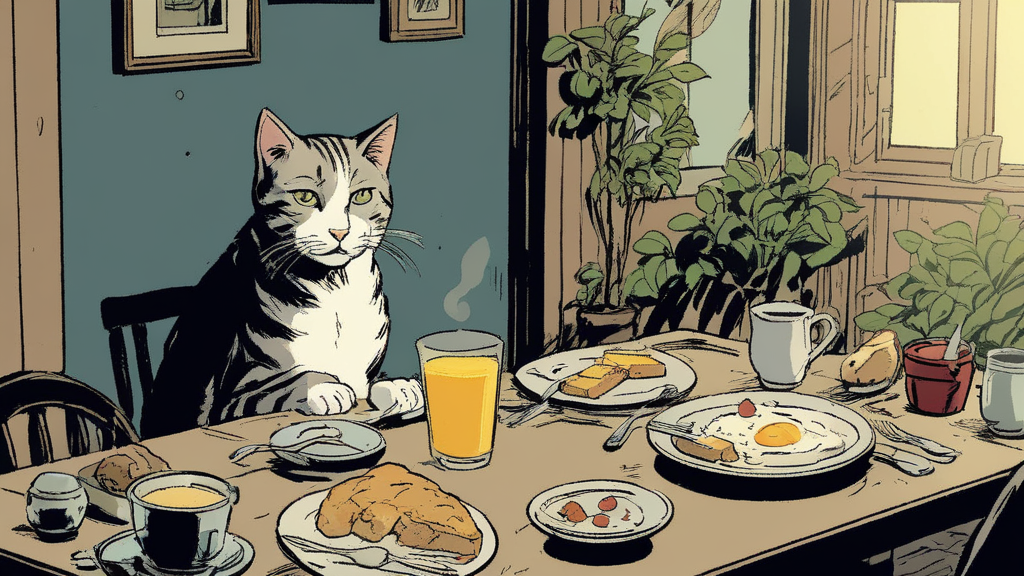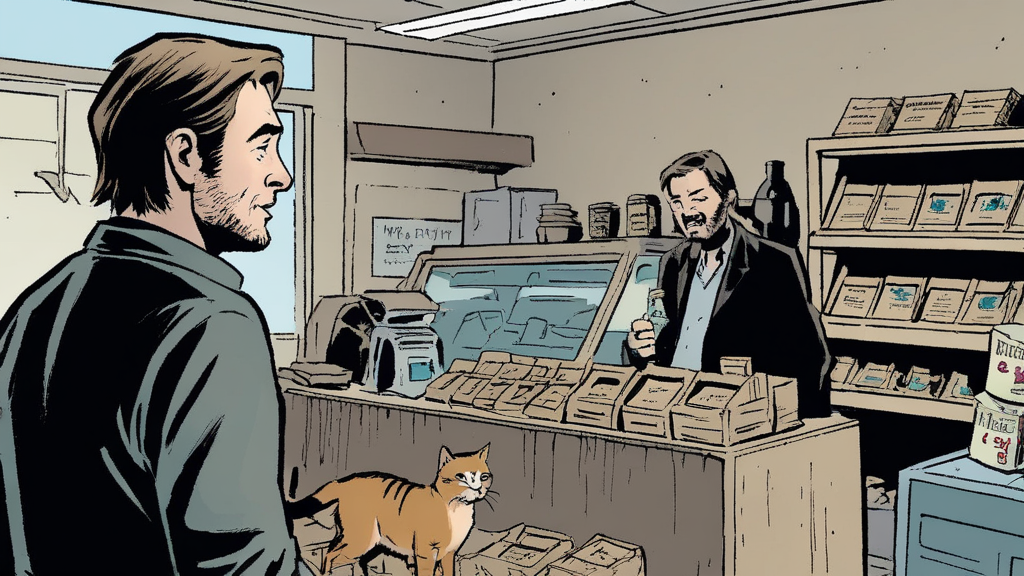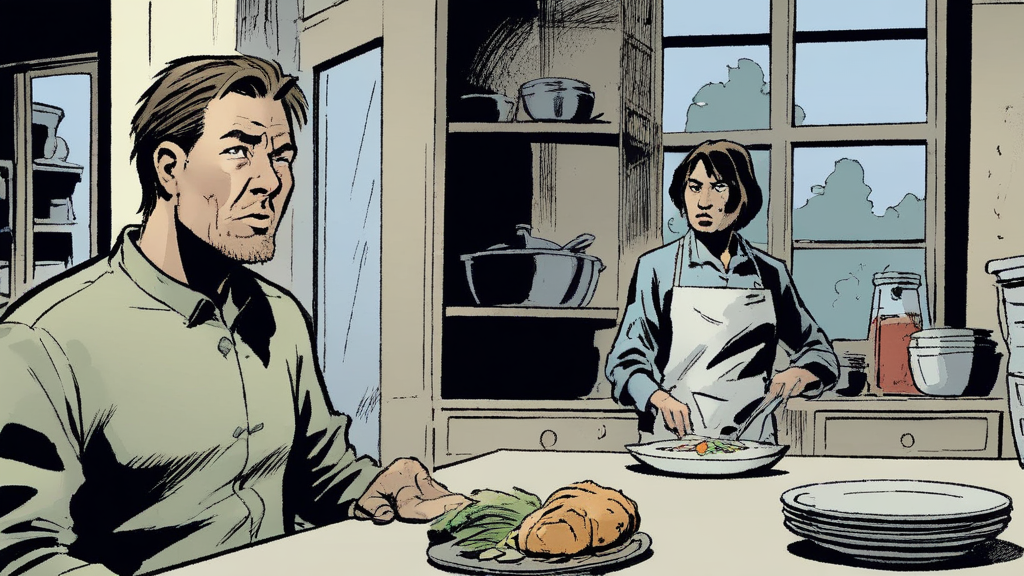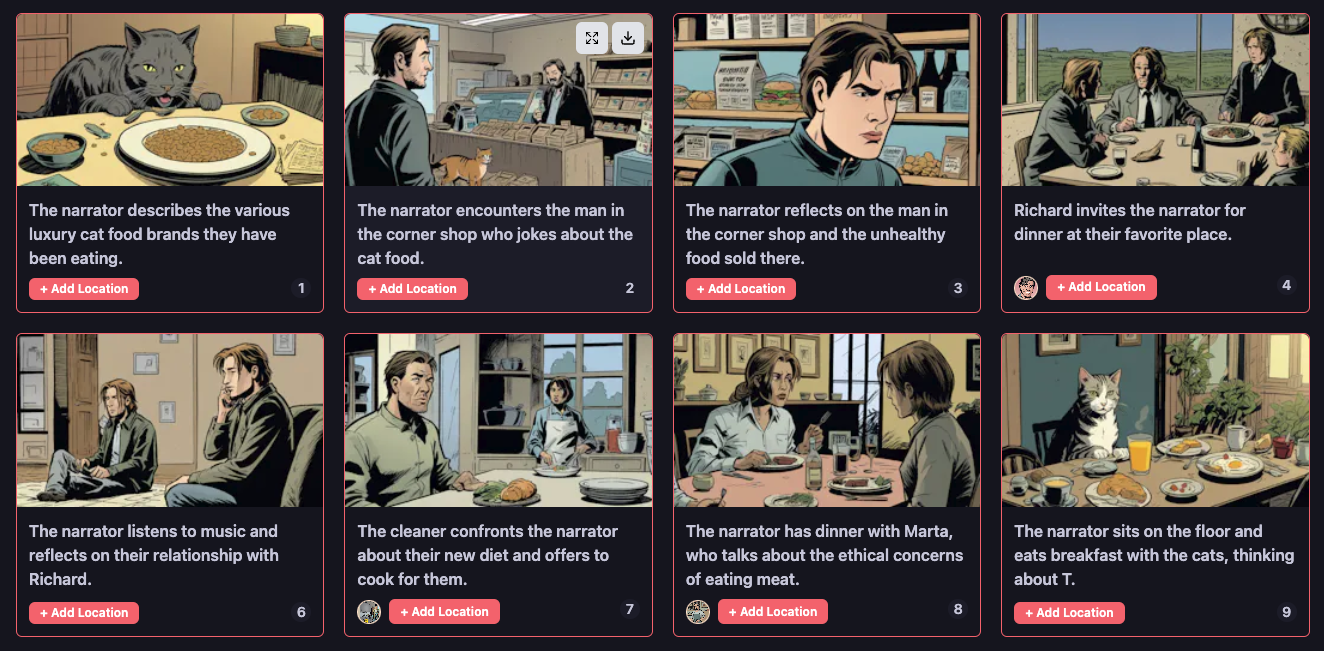I used generative AI to turn my story into a comic—and you can too
By pulling together several different generative models into an easy-to-use package controlled with the push of a button, Lore Machine heralds the arrival of one-click AI.

Thirteen years ago, as an assignment for a journalism class, I wrote a stupid short story about a man who eats luxury cat food. This morning, I sat and watched as a generative AI platform called Lore Machine brought my words to life.
I fed my story into a text box and got this message: “We are identifying scenes, locations, and characters as well as vibes. This process can take up to 2 minutes.” Lore Machine analyzed the text, extracted descriptions of the characters and locations mentioned, and then handed those bits of information off to an image-generation model. An illustrated storyboard popped up on the screen. As I clicked through vivid comic-book renderings of my half-forgotten characters, my heart was pounding.

After more than a year in development, Lore Machine is now available to the public for the first time. For $10 a month, you can upload 100,000 words of text (up to 30,000 words at a time) and generate 80 images for short stories, scripts, podcast transcripts, and more. There are price points for power users too, including an enterprise plan costing $160 a month that covers 2.24 million words and 1,792 images. The illustrations come in a range of preset styles, from manga to watercolor to pulp ’80s TV show.
Zac Ryder, founder of creative agency Modern Arts, has been using an early-access version of the tool since Lore Machine founder Thobey Campion first showed him what it could do. Ryder sent over a script for a short film, and Campion used Lore Machine to turn it into a 16-page graphic novel overnight.
“I remember Thobey sharing his screen. All of us were just completely floored,” says Ryder. “It wasn’t so much the image generation aspect of it. It was the level of the storytelling. From the flow of the narrative to the emotion of the characters, it was spot on right out of the gate.”
Modern Arts is now using Lore Machine to develop a fictional universe for a manga series based on text written by the creator of Netflix’s Love, Death & Robots.

Under the hood, Lore Machine is built from familiar parts. A large language model scans your text, identifying descriptions of people and places as well as its overall sentiment. A version of Stable Diffusion generates the images. What sets it apart is how easy it is to use. Between uploading my story and downloading its storyboard, I clicked maybe half a dozen times.
That makes it one of a new wave of user-friendly tools that hide the stunning power of generative models behind a one-click web interface. “It’s a lot of work to stay current with new AI tools, and the interface and workflow for each tool is different,” says Ben Palmer, CEO of the New Computer Corporation, a content creation firm. “Using a mega-tool with one consistent UI is very compelling. I feel like this is where the industry will land.”
Look! No prompts
Campion set up the company behind Lore Machine two years ago to work on a blockchain version of Wikipedia. But when he saw how people took to generative models, he switched direction. Campion used the free-to-use text-to-image model Midjourney to make a comic-book version of Samuel Taylor Coleridge’s The Rime of the Ancient Mariner. It went viral, he says, but it was no fun to make.

“My wife hated that project,” says Campion. “I was up to four in the morning, every night, just hammering away, trying to get these images right.” The problem was that text-to-image models like Midjourney generate images one by one. That makes it hard to maintain consistency between different images of the same characters. Even locking in a specific style across multiple images can be hard. “I ended up veering toward a trippier, abstract expression,” he says.
The experience made him see that this tech needed to be a lot easier to use. Campion won’t say exactly how Lore Machine manages to keep its images and style consistent across a series of illustrations. It’s pretty good, but not perfect: in one scene from my story a short-haired character has grown bangs; in another, the same character appears twice.
The illustrations can start to feel generic, too. I was disappointed that my descriptions of one character having "teeth like pinto beans" and another having "hands like slices of bleached white bread" didn't translate to their portraits. But compared with doing this by hand, prompt by prompt, Lore Machine is a huge step up.
“The consistency is great,” says Ryder. It’s given Modern Arts the confidence to use Lore Machine in a project with one of its clients. “Had we constantly needed to go back and fix consistency issues, there’s no way we would have been able to deliver on time,” he says.

Like all generative models, the tech behind Lore Machine will spit out toxic content on demand. Campion says they have stopped it from generating images depicting violence or hateful stereotypes. But otherwise, he is unwilling to curb artists’ creative expression. Generating illustrations for celebrity fan fiction is fair game, for example.
Much of the initial interest in Lore Machine has come from marketing agencies. But Campion hopes the public release will encourage a wider range of users to try it out. Six months ago, he says, he got a call from the principal of a school in Manhattan for kids with learning disabilities. The principal wanted to run his textbooks through the tool so that his kids could have images to look at. “I hadn’t even thought of that. I was too stuck in a Hollywood mindset,” says Campion.
Deep Dive
Artificial intelligence
Large language models can do jaw-dropping things. But nobody knows exactly why.
And that's a problem. Figuring it out is one of the biggest scientific puzzles of our time and a crucial step towards controlling more powerful future models.
Google DeepMind’s new generative model makes Super Mario–like games from scratch
Genie learns how to control games by watching hours and hours of video. It could help train next-gen robots too.
What’s next for generative video
OpenAI's Sora has raised the bar for AI moviemaking. Here are four things to bear in mind as we wrap our heads around what's coming.
Stay connected
Get the latest updates from
MIT Technology Review
Discover special offers, top stories, upcoming events, and more.